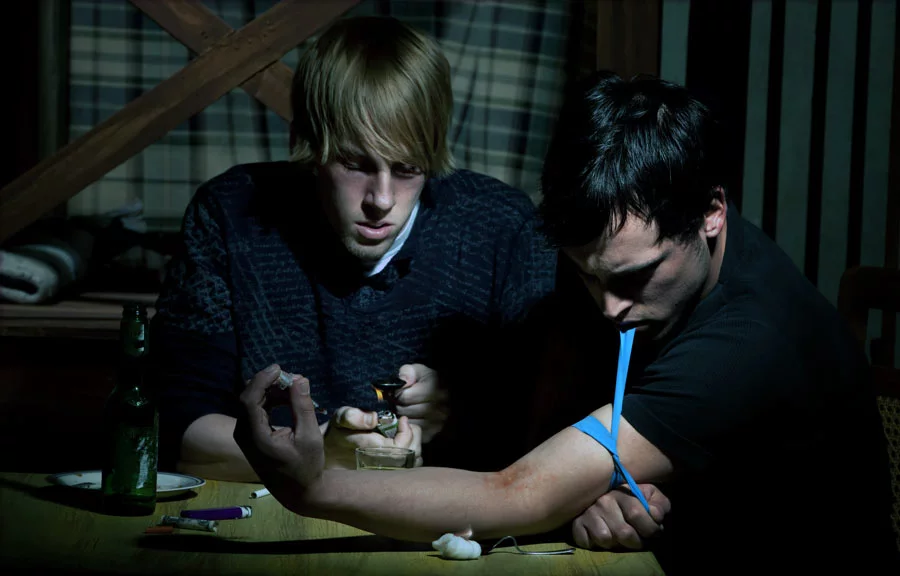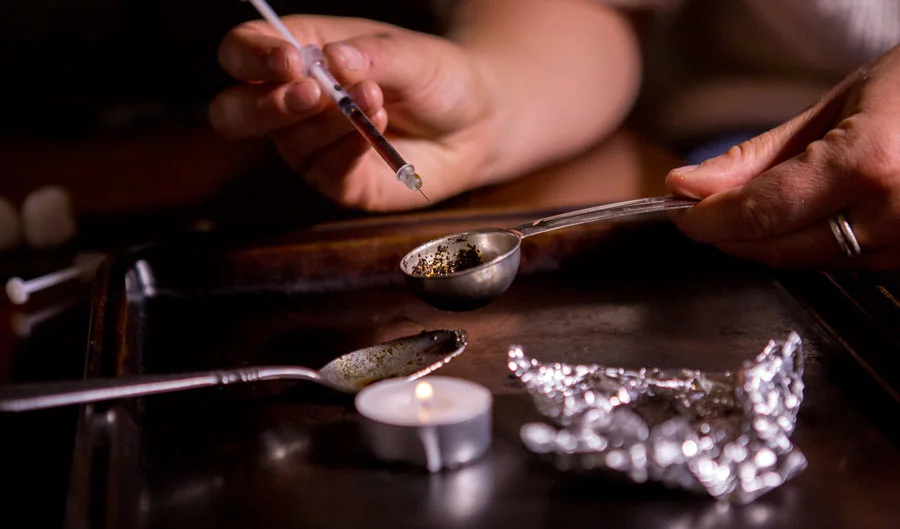A Different Form of Heroin With Familiar and Additional Risks
Heroin is a powerful drug classified as an opioid or opiate. All forms of this drug are made from the same starting ingredient. However, that ingredient can be processed in a number of ways. For this reason, not all forms of heroin resemble each other. The drug often has a powdery consistency and a white or brownish color. However, it may also have a darker color and a stickier or tackier consistency. The common street name for this darker, tackier form of heroin is black tar.
Just like other forms of heroin, black tar is highly addictive. In addition, the steps used to treat addiction are the same for all versions of the drug. However, use of black tar heroin also comes with some unique health risks. These additional risks make it even more crucial that you seek professional help as soon as possible.
What Is Black Tar Heroin
Heroin is made from morphine, a substance found in plants known as opium poppies. The conversion of morphine into heroin requires several steps of chemical processing. This processing can take place in a wide range of environments. It can also be carried out by people with varying levels of skill and experience.
When heroin is made in strictly controlled conditions, it typically takes the form of a white powder. This more or less pure version of the drug lacks any significant impurities. Morphine processed under somewhat less controlled conditions can yield a brownish powder.
Black tar heroin is the product of a much less refined morphine conversion process. This process leaves behind a relatively high percentage of impurities in the drug. In turn, these impurities account for black tar’s characteristic color and texture. Some black tar heroin is sticky or tacky to the touch. However, it may also have a texture similar to coal or charcoal. As a rule, black tar heroin is made in Mexico. In contrast, heroin powder typically comes from Colombia.
Who Uses Black Tar Heroin
In the U.S., the availability of black tar and powdered heroin is largely split along geographic lines. East of the Mississippi River, powdered heroin from Colombia dominates the market. West of the Mississippi, black tar heroin is the norm. Still, you’ll find powdered heroin in the western U.S. You’ll also find black tar heroin in the eastern U.S.
Any given person who uses heroin may prefer the black tar or powdered form of the drug. In addition to availability, things that may determine which form of heroin is used include:
- The relative consistency of the drug’s effects
- How rapidly a given batch of heroin produces its characteristic “high”
While black tar heroin is less pure than the powdered form of the drug, it is not necessarily less potent. Why? Powered heroin often contains additives such as:
- Powdered milk
- Corn starch
- Quinine
- Sugar
These additives are included to increase the profit margins of heroin producers and/or dealers. They also decrease the drug’s potency. This means that a given batch of black tar heroin may be stronger than a batch of powdered heroin. For that reason, users of the drug may prefer black tar.
What Are the Effects of Black Tar Heroin
In terms of their ability to trigger addiction, the effects of black tar heroin are essentially the same as powdered heroin. All opioid addiction occurs in a basic series of steps. First, recurring use of the drug leads to physical dependence. This dependent state indicates that your brain has come to rely on the presence of the drug.
Physical dependence can then lead to psychological dependence. This additional dependent state is characterized by an emotional need for heroin. A heroin user affected by physical and psychological dependence may start compulsively seeking more of the drug. That compulsive, involuntary behavior marks the definitive arrival of heroin addiction.
Black tar heroin is also known for its particular ability to produce certain physical health problems in its users. Those problems include rapid vein scarring and vein loss. They also include serious skin and soft tissue infections such as:
- Tetanus
- Necrotizing fasciitis
- Wound botulism
Such issues can also happen to people who inject solutions made from powered heroin. However, they are especially likely in people who inject black tar-based solutions.
Can You Snort Heroin or Black Tar Heroin
Some people don’t inject heroin. Instead, they snort or inhale the drug through their noses. In these cases, powdered heroin is the typical form in use. Practically speaking, the sticky form of black tar cannot be snorted in any kind of effective way. However, it is technically possible to break down the coal-like variety of black tar and inhale it through the nose.
Can You Overdose From Black Tar

You can overdose on any form of heroin. That includes both the sticky and hard black tar forms of the drug. How do heroin overdoses happen?
Like all opioids, heroin suppresses the normal function of your central nervous system. In other words, it slows down the activity level in your brain and spinal cord. Within limits, these two vital organs can function slower than usual without seriously harming you. But if the activity rate slows down enough, major problems will quickly follow.
These problems manifest as the classic symptoms of a heroin/opioid overdose. Specific overdose symptoms you may experience include:
- Limp or slack muscles
- Clammy and/or pale skin
- Vomiting
- Gurgling noises that may indicate a blocked airway
- Lips or fingernail beds that turn a blue or purplish color
- Loss the ability to speak
- Unresponsive unconsciousness
- A dangerously slowed heartbeat
- Complete stoppage of your heart
- A dangerously slowed breathing rate
- Total cessation of breathing
An overdose involving any form of heroin can be fatal if you do not receive rapid medical attention.
Is Black Tar Safer Than Fentanyl

Heroin shares its overdose potential with all other opioid substances. That includes the prescription drug fentanyl. Fentanyl is far more potent than heroin. Experts rate its strength as at least 50 times greater than heroin’s source material, morphine.
If you misuse fentanyl, you are more likely to overdose than you are with the same amount of heroin. However, there is no such thing as safe heroin use. Not only can you die from the effects of the drug itself. The impurities in black tar heroin may present their own separate health risk.
Do I Need Heroin Addiction Treatment
Heroin addiction is an example of something called opioid use disorder, or OUD. Some of the official signs and symptoms of this disorder are related to addiction. In addition to withdrawal, the list of these potential issues includes:
- Becoming increasingly tolerant of black tar heroin’s drug effects
- Experiencing cravings for heroin in between the times you use
- Arranging your daily routine around heroin-related activities
- Cutting back on other activities so you have more time to use heroin
- Repeatedly taking heroin more often or in larger amounts than you meant to
- Not being able to halt your heroin use despite trying two or more times
- Keeping up a level of heroin consumption that you know damages your health
You do not have to be addicted to receive an OUD diagnosis or require a treatment program. Instead, you may show signs or symptoms of a seriously harmful pattern of non-addicted heroin abuse. Issues that may point to the presence of this second form of OUD include:
- Repeatedly using black tar heroin while doing physically risky things like driving
- Maintaining a level of heroin use that interferes with your work, home or school duties
- Not stopping a pattern of heroin use that disrupts your close relationships
All told, the OUD diagnosis includes 11 potential indicators of addiction and/or non-addicted abuse. You qualify for this diagnosis if just two of these indicators occur within the span of a year. It does not matter if you are affected by addiction-related problems or abuse-related problems. Treatment is strongly recommended in both sets of circumstances.
How Is Heroin Addiction Treated
Detox
Heroin addiction is treated in the same manner as all other forms of opioid addiction. The process typically starts with a supervised medical detox program that:
- Allows you to get heroin out of your system
- Reduces the intensity of your heroin withdrawal symptoms
- Helps keep you comfortable
- Monitors your health and safeguards you from any withdrawal complications
Medication plays an essential role in heroin detox. To keep your withdrawal symptoms within a tolerable range, you may receive buprenorphine or methadone. Both of these medications are temporary substitute opioids. As you withdraw from heroin, they provide enough of an opioid boost to help control your symptoms. However, they do not intoxicate you.
Do I Need Medical Detox for Heroin
Do you need medical detox for heroin? That depends on whether or not you are addicted to the drug. Detox is specifically designed to help you cope with the effects of heroin withdrawal. Withdrawal symptoms are a classic indicator of addiction. You can potentially experience them without being addicted to the drug. But for the most part, withdrawal and addiction go hand in hand.
Most people addicted to heroin need to go through detox when they start the recovery process. If you are not addicted to heroin, you may still need treatment. However, your recovery plan may not include participation in a medical detox program.
Medication-Assisted Treatment Options for Opiates and Opioids
Heroin detox is followed by enrollment in a primary heroin treatment program. Today, modern programs rely on a model of care that combines medication and psychotherapy. The accepted term for this model is medication-assisted treatment, or MAT. The list of medications approved for MAT includes both buprenorphine and methadone. It also includes the anti-opioid naltrexone, which shuts down the pathways opioids use to reach your brain.
Medication-assisted treatment options for opiates and opioids include several kinds of psychotherapy. Examples of these options include:
- Community reinforcement
- Contingency management interventions, also known as motivational incentives
- 12-step facilitation therapy
All of these treatments are behavioral therapies. This means that they help you change your behavior in ways that:
- Support your sobriety during treatment
- Make it easier for you to stay sober when treatment ends
- Provide vital peer support for your short- and long-term sobriety efforts
The MAT approach is backed by extensive study and research. As a result, addiction specialists classify it as an evidence-based treatment. Evidence-based care is the 21st gold standard for all forms of substance rehab.
Finding Treatment in Colorado for Black Tar Heroin
You can find help for black tar problems at any rehab that treats heroin addiction. To maximize your chances for recovery success, only consider Colorado rehabs that use the MAT model of care. The rehabs on your list of options should also include help for additional mental health issues. This is true because such issues often accompany cases of heroin addiction. In addition, you may want to focus on heroin rehabs that offer medical detox services. If you are addicted, you will likely require these services.
Does Insurance Cover Rehab for Black Tar Heroin Problems

Today, health insurance plans typically cover treatment for all forms of addiction. That includes addiction to black tar heroin and other heroin products. The exact level of coverage varies from policy to policy. Your particular coverage may take care of some or all of your rehab expenses.
Long-Term Recovery From Heroin Can Be Found at Best Rehabs In Arizona
Black tar is a form of heroin with relatively high amounts of impurities. As with all other heroin products, its use can lead to addiction. The impurities in black tar can also seriously damage your skin, veins and surrounding tissues. To avoid the harms associated with the drug, you need effective, professional recovery support.
At Best Rehabs In Arizona, we specialize in the treatment of all forms of heroin addiction. Whether you use black tar or other varieties of the drug, our customized program can help. That program includes medical detox, as well as MAT and dual diagnosis services. Best Rehabs In Arizona maintains locations in Colorado and Arizona. To get your long-term recovery underway, just choose the location closest to you. Call us today for more information.


